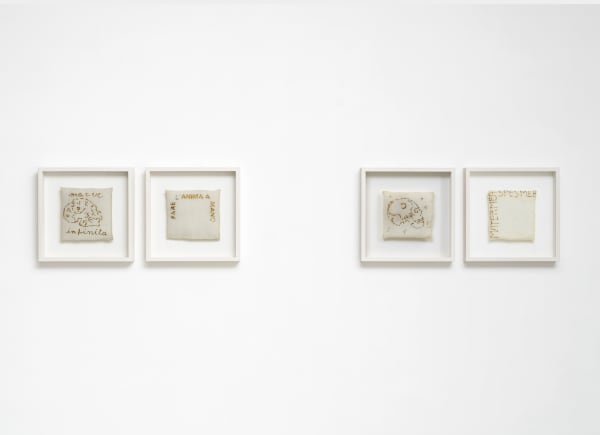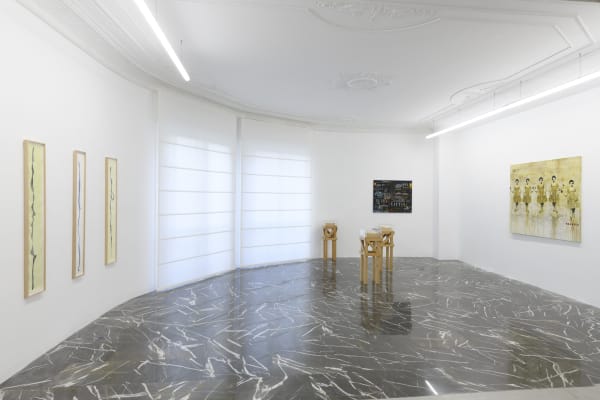Il segno è l’esemplare parlato: Mariella Bettineschi, Beatrice Pediconi, Maria Angeles Vila Tortosa, Simona Weller
-

Il segno è l'esemplare parlato
in installation view at z2o project
ph. Giorgio Benni
-

Il segno è l'esemplare parlato
in installation view at z2o project
ph. Giorgio Benni
-

Il segno è l'esemplare parlato
in installation view at z2o project
ph. Giorgio Benni
-

Il segno è l'esemplare parlato
in installation view at z2o project
ph. Giorgio Benni
-

Il segno è l'esemplare parlato
in installation view at z2o project
ph. Giorgio Benni
-

Il segno è l'esemplare parlato
in installation view at z2o project
ph. Giorgio Benni
-

Il segno è l'esemplare parlato
in installation view at z2o project
ph. Giorgio Benni
-

Il segno è l'esemplare parlato
in installation view at z2o project
ph. Giorgio Benni
-

Il segno è l'esemplare parlato
in installation view at z2o project
ph. Giorgio Benni
-

Beatrice Pediconi
Emaki 1, 2022Emulsion transfert and acrilyc on paper
cm 138 x 18ph. Giorgio Benni
-

Beatrice Pediconi
Emaki 2, 2022
emulsion transfer and acrilyc on paper
cm 138 X 23
ph. Giorgio Benni
-

-

Mariella Bettineschi
Morbido, 1980
organza, cotton wool, gold
cm 20 x 20; cm 40 x 40 with frame
ph. Giorgio Benni
-

Mariella Bettineschi
Morbido, 1980
organza, cotton wool, gold
cm 20 x 20; cm 40 x 40 with frame
ph. Giorgio Benni
-

Mariella Bettineschi
Morbido, 1980
organza, cotton wool, gold
cm 20 x 20; cm 40 x 40 with frame
ph. Giorgio Benni
-

Mariella Bettineschi
Morbido, 1980
organza, cotton wool, gold
cm 20 x 20; cm 40 x 40 with frame
ph. Giorgio Benni
-

Maria Angeles Vila Tortosa
Cuaderno de la memoria Deseo, 2009
artist’s book
variable dimensions
ph. Giorgio Benni
-

Maria Angeles Vila Tortosa
Razón, 2009
artist’s book
variable dimensions
ph. Giorgio Benni
-

Maria Angeles Vila Tortosa
Amor, 2009
artist’s book
variable dimensions
ph. Giorgio Benni
-

Maria Angeles Vila Tortosa
Deseo, 2009
mixed media on canvas
cm 120 x 150
ph. Giorgio Benni
-

Simona Weller
Aspettando l’alba, 1978-1980
tempera on paper
cm 20 x 100 each (4 works)
ph. Giorgio Benni
-

Simona Weller
Il mare in tempesta a Sabaudia. Notturno #2 (diptych), 1978-1980
oil on cardboad
cm 20 x 100 each
ph. Giorgio Benni
-

Simona Weller
Il mare in tempesta a Sabaudia. Notturno #1 (diptych), 1978-1980
oil on cardboard
cm 20 x 100 each
ph. Giorgio Benni
-

Simona Weller
Tutti Cattivi, 1973
mixed media on canvas
cm 80 x 100
ph. Giorgio Benni





















